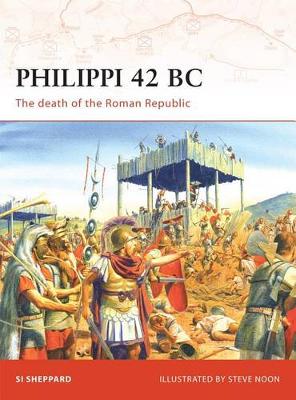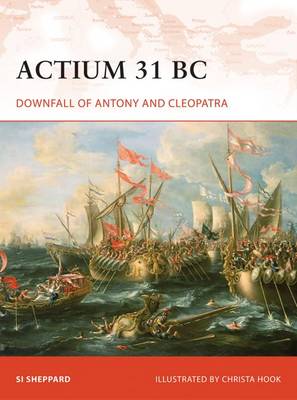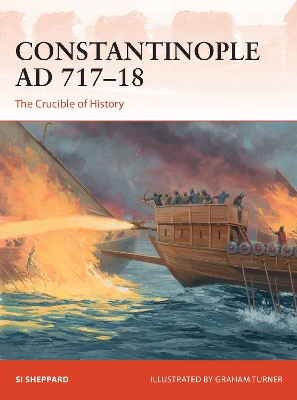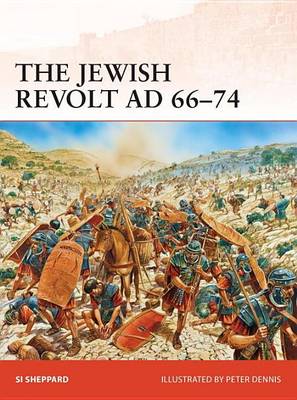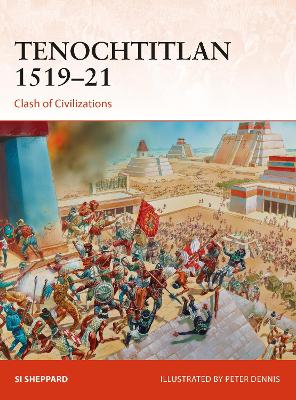Campaign
3 primary works • 6 total works
Book 199
Forever immortalised by Shakespeare's play "Julius Caesar", the battle of Philippi was the final battle between the forces of Mark Antony and Octavian against the armies of Caesar's assassins Brutus and Longinus.
Book 211
In 32 BC, the Roman Republic descended into Civil War between the forces of the Octavian in the west and the famous lovers Cleopatra and Marc Antony in the East. Acting quickly, Octavian managed to trap his foes in the Gulf of Actium. In the ensuing battle, Anthony and Cleopatra manage to escape, but their military forces and their hopes for victory in the war were crushed. Soon afterward, the lovers committed suicide, and Octavian dissolved the republic and declared himself Emperor. Actium has remained one of the most famous battles of the ancient world thanks to Shakespeare and Hollywood. This new book tells the true story of the decisive and bloody battle that would once and for all seal the fate of the Roman Republic.
Book 347
The siege of Constantinople in AD 717-18 was the supreme crisis of Western civilization.
The Byzantine Empire had been reeling under the onslaught of Arabic imperialism since the death of the Prophet, whilst Jihadist armies had detached Syria, Palestine, Egypt, and Carthage from imperial control and were in the process of imposing their ascendancy at sea. The Empire had been reduced to its Anatolian and Balkan heartland, and Arab incursions threatened even this - Arab naval forces had appeared under the walls of Constantinople every year from AD 674 to 678. But all this was only a prelude to the massive combined-arms invasion force that advanced on the capital in 717.
This title offers a comprehensive study of the ensuing clash between the ascendant Caliphate and the Empire at bay. It details the forces available to each side, with their respective advantages and vulnerabilities, evaluating the leadership qualities of the rival commanders and assessing their strategic and tactical initiatives. It also accounts for the trajectory and outcome of the campaign and emphasises the fundamental significance of the struggle. By holding the line, the Byzantines gave Europe enough time to develop at its own pace and emerge strong enough to face down its Islamic counterpart on equal terms. If Constantinople had fallen in 717, could Europe have endured as an independent entity? Could Christianity have survived as major religion? What would the future course of world history have been?
The Byzantine Empire had been reeling under the onslaught of Arabic imperialism since the death of the Prophet, whilst Jihadist armies had detached Syria, Palestine, Egypt, and Carthage from imperial control and were in the process of imposing their ascendancy at sea. The Empire had been reduced to its Anatolian and Balkan heartland, and Arab incursions threatened even this - Arab naval forces had appeared under the walls of Constantinople every year from AD 674 to 678. But all this was only a prelude to the massive combined-arms invasion force that advanced on the capital in 717.
This title offers a comprehensive study of the ensuing clash between the ascendant Caliphate and the Empire at bay. It details the forces available to each side, with their respective advantages and vulnerabilities, evaluating the leadership qualities of the rival commanders and assessing their strategic and tactical initiatives. It also accounts for the trajectory and outcome of the campaign and emphasises the fundamental significance of the struggle. By holding the line, the Byzantines gave Europe enough time to develop at its own pace and emerge strong enough to face down its Islamic counterpart on equal terms. If Constantinople had fallen in 717, could Europe have endured as an independent entity? Could Christianity have survived as major religion? What would the future course of world history have been?
In AD 66 a local disturbance in Caesarea caused by Greeks sacrificing birds in front of a local synagogue exploded into a pan-Jewish revolt against their Roman overlords. Gaining momentum, the rebels successfully occupied Jerusalem and drove off an attack by the Roman legate of Syria, Cestus Gallius, who was defeated at the battle of Beth Horon. The emperor Nero dispatched the Roman general Vespasian along with reinforcements and, having crushed the revolt in Galilee he became embroiled in the events of the Year of the Four Emperors that would lead to his assumption of the Imperial throne. His son Titus was left to carry on the war which culminated in the dramatic siege of Jerusalem in AD 70. Remorselessly, the legions strangled the life out of the defense street by street, leaving nothing but rubble and ashes in their wake. The apotheosis of the conflict was the final stand of the last holdouts in the Temple precinct itself, and the utter annihilation of this, the physical manifestation of Judaism itself. The last remnants held out in the mountain fortress of Masada until AD 73 when with the Romans breaking down the walls the defenders committed mass suicide bringing the revolt to an end.
In 1519, the Conquistador Hernán Cortés landed on the mainland of the Americas. His quest to serve God, win gold, and achieve glory drove him into the heartland of what is now Mexico, where no European had ever set foot before. He marched towards to the majestic city of Tenochtitlan, floating like a jewel in the midst of Lake Texcoco.
This encounter brought together cultures that had hitherto evolved in complete isolation from each other – Catholic Spain and the Aztec Empire. What ensued was the swift escalation from a clash of civilizations to a war of the worlds. At the conclusion of the Conquistador campaign of 1519–21, Tenochtitlan lay in ruins, the last Aztec Emperor was in chains, and Spanish authority over the native peoples had been definitively asserted.
With the colourful personalities – Cortés, Malinche, Pedro Alvarez, Cuitláhuac, Cuauhtémoc – driving the narrative, and the vivid differences in uniforms, weapons, and fighting styles between the rival armies (displayed using stunning specially commissioned artwork), this is the fascinating story of the collapse of the Aztec Empire.
This encounter brought together cultures that had hitherto evolved in complete isolation from each other – Catholic Spain and the Aztec Empire. What ensued was the swift escalation from a clash of civilizations to a war of the worlds. At the conclusion of the Conquistador campaign of 1519–21, Tenochtitlan lay in ruins, the last Aztec Emperor was in chains, and Spanish authority over the native peoples had been definitively asserted.
With the colourful personalities – Cortés, Malinche, Pedro Alvarez, Cuitláhuac, Cuauhtémoc – driving the narrative, and the vivid differences in uniforms, weapons, and fighting styles between the rival armies (displayed using stunning specially commissioned artwork), this is the fascinating story of the collapse of the Aztec Empire.
A highly illustrated and detailed study of one of the most important campaigns in the colonization of the Americas, the Spanish conquest of the vast Inca Empire.
In April 1532 a bloody civil war between two brothers ended with one of them, Atahualpa, as master of the mighty Inca Empire. Now the most powerful man in South America, his word was law for millions of subjects spread across thousands of square miles, from the parched deserts of the coast to the lush rainforest of the Amazon and along the spine of the soaring Andes Mountains. But the time of the Incas was coming to an end. In November of that year a handful of Spanish conquistadors led by Francisco Pizarro seized Atahualpa at Cajamarca, extorted his treasure, murdered him, and then marched on the Inca capital Cuzco to elevate a puppet, Manco, to the vacant throne. In 1536, however, Manco roused his people against the intruders, and the Spaniards found themselves isolated and fighting for their lives. This fascinating and beautifully illustrated book brings to life the background to and progress of the desperate 10-month siege of Cuzco; the opposing commanders, their fighting men, tactics, and military technologies; the key clashes, from Sacsayhuamán to Ollantaytambo; and how the outcome shaped our world today.
In April 1532 a bloody civil war between two brothers ended with one of them, Atahualpa, as master of the mighty Inca Empire. Now the most powerful man in South America, his word was law for millions of subjects spread across thousands of square miles, from the parched deserts of the coast to the lush rainforest of the Amazon and along the spine of the soaring Andes Mountains. But the time of the Incas was coming to an end. In November of that year a handful of Spanish conquistadors led by Francisco Pizarro seized Atahualpa at Cajamarca, extorted his treasure, murdered him, and then marched on the Inca capital Cuzco to elevate a puppet, Manco, to the vacant throne. In 1536, however, Manco roused his people against the intruders, and the Spaniards found themselves isolated and fighting for their lives. This fascinating and beautifully illustrated book brings to life the background to and progress of the desperate 10-month siege of Cuzco; the opposing commanders, their fighting men, tactics, and military technologies; the key clashes, from Sacsayhuamán to Ollantaytambo; and how the outcome shaped our world today.
